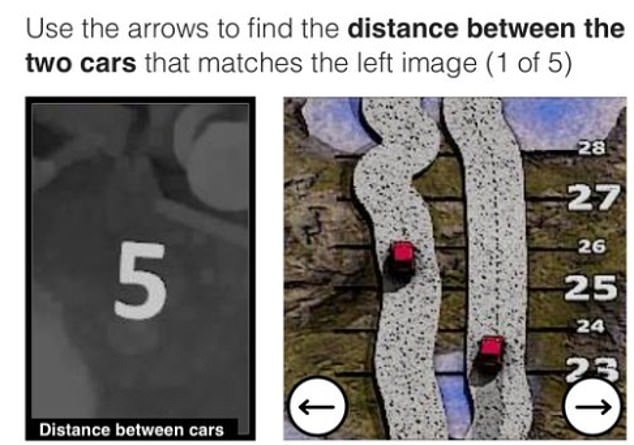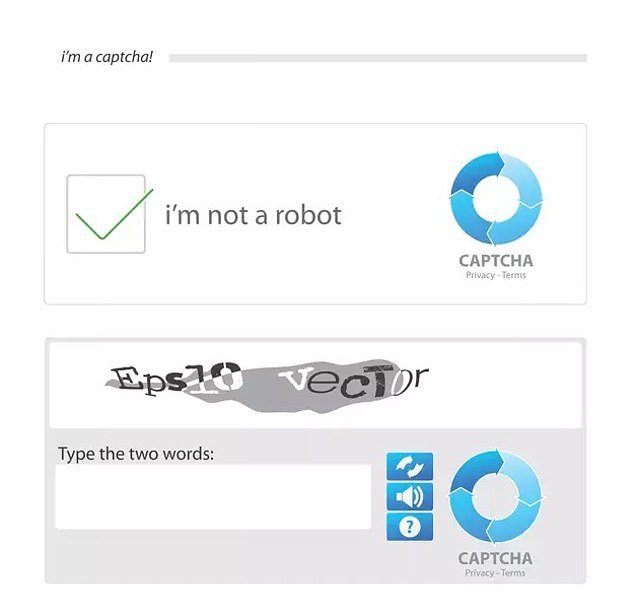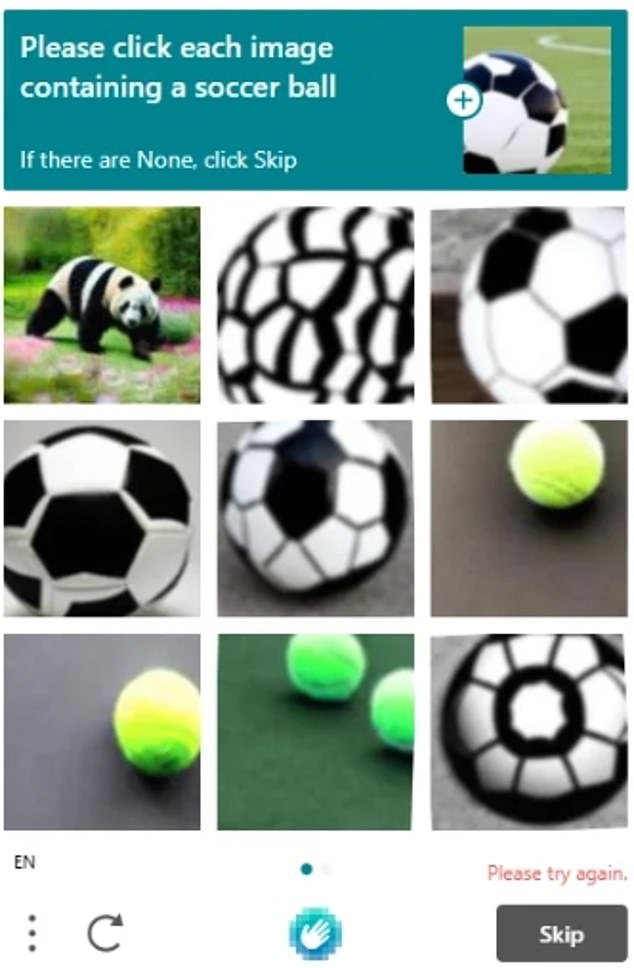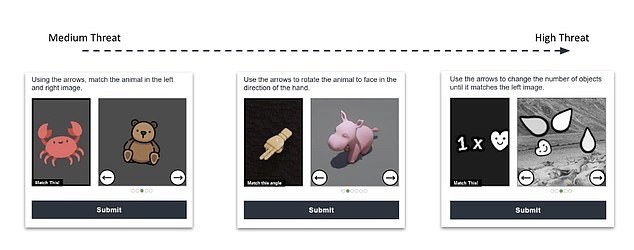Have you been bothered by “I’m not a robot” captchas lately? It’s not just you… they’re getting harder – here’s why
Captchas are becoming increasingly difficult to solve and there is a reason for that: bots are outsmarting you.
The “I’m not a robot” prompt originally required users to copy a series of letters and numbers or identify all the buses in a series of images that were often difficult to misunderstand.
But new versions asking users to select the objects with the same shape or click on the non-water animal.
Captchas are puzzles used to protect websites from nefarious bots, and were used to ask a simple ‘copy the text’ question but have now evolved to ask people to solve brain-bending questions.
Captcha puzzles (pictured) can involve anything from matching a puzzle piece to the open box to copying a series of numbers and letters. But these puzzles are becoming increasingly difficult to solve as bots continue to evolve.

Captcha images (pictured) require people to use intelligence to solve the puzzle rather than providing basic directions such as ‘identify the crossings’

Captcha was created in 2000 as a way to prevent bots from accessing a website and is an acronym for ‘Completely Automated Public Turing Test to Tell Computers and Humans Apart’
A task as simple as logging into a social media account or trying to pay your utility bills is becoming a hassle, as a growing number of people are starting to complain that the once easy-to-solve Captcha has become a frustrating roadblock that keeps them from prevents you from accessing a website.
“To be honest, things get even weirder because now you have to do something that doesn’t make sense,” says Kevin Gosschalk, the founder and CEO of Arkose Labs, a web security company that designs captchas. The Wall Street Journal.
“Otherwise, large multimodal models will be able to understand it,” he added.
Captcha is an acronym for ‘Completely Automated Public Turing Test to Tell Computers and Humans Apart’ and was created in 2000 to prevent bots from attacking networks and websites.
The original clues included a short series of text to copy, but over the past twenty years it continued with searching for fire hydrants and crosswalks in the series of images.
These clues can still be confusing as people notice a little bit of a crosswalk in a square and anxiety increases as you ask yourself, ‘Does this count? Should I select it?’ knowing that one wrong selection can trigger a ‘try again’ response and send you back to the beginning.
“I’ve always hated the ‘click the lights’ or ‘cross it’ thing because I’m never sure if it means anything,” one person complained on Reddit, adding, “When it’s 95 percent in one square , is that so? both squares?’
Even though these clues cause their own kind of confusion, the “I’m not a bot” puzzles have now moved beyond those based on variables that determine whether a bot can pose a low, medium, or high threat to a site.
Arkose MatchKey Labs creates captchas for websites and starts with the ‘easier’ option where the person must use the arrows to match the crab in the left image with the bear in the right image.
Sounds simple enough until you go to a site considered a bot risk and are instructed to “use the arrows to change the number of objects until it matches the left image.”

People complained that Captchas like this one were confusing because some images were unidentifiable, forcing them to solve the problem more than once

Arkose MatchKey Labs creates Captchas (pictured) that protect medium-to-high-risk websites that are at risk of a bot stealing important information
Company identifies itself as ‘the strongest Captcha ever created’, and for general threat levels, it only approves if users can solve the puzzle for the first time, but admits that the strongest puzzles ‘designed for bad actors’ are not affected by speed of users who complete the model.
As bots became increasingly able to crack the code of captchas, they had to make them more complex and challenging, requiring actual intelligence to solve the problem, such as asking the user to solve a simple math equation.
Last year, researchers at the University of California, Irvine found that bots could consistently answer Captchas’ scrambled text with nearly 100 percent accuracy.
Bots are often created to scrape content from sites, post fake comments or reviews, and “often outsource the solving to Captcha farms – sweatshop-like operations where people are paid to solve Captchas,” the study said.
Although the puzzles were created to combat the rise of the bots, the ever-increasing difficulty and time-consuming process could mean the difference between getting tickets to a show or standing outside the concert hall looking for a scalper.
If you’re starting to question your sanity while trying to crack the Captcha tests, British comedian Jack Whitehall faces the same level of disdain.
“Is it just me, or have the ‘I’m not a robot’ tests become increasingly difficult?” Whitehall asked in his latest Netflix special.
“Has anyone recently had that moment where you’ve failed the I’m-not-a-robot test so many times that you have that moment where you stop and go again… Maybe I’m a robot?” he said.
‘I did not manage to spot 10 (traffic) lights in a row. I’m a robot or a cyclist!’

